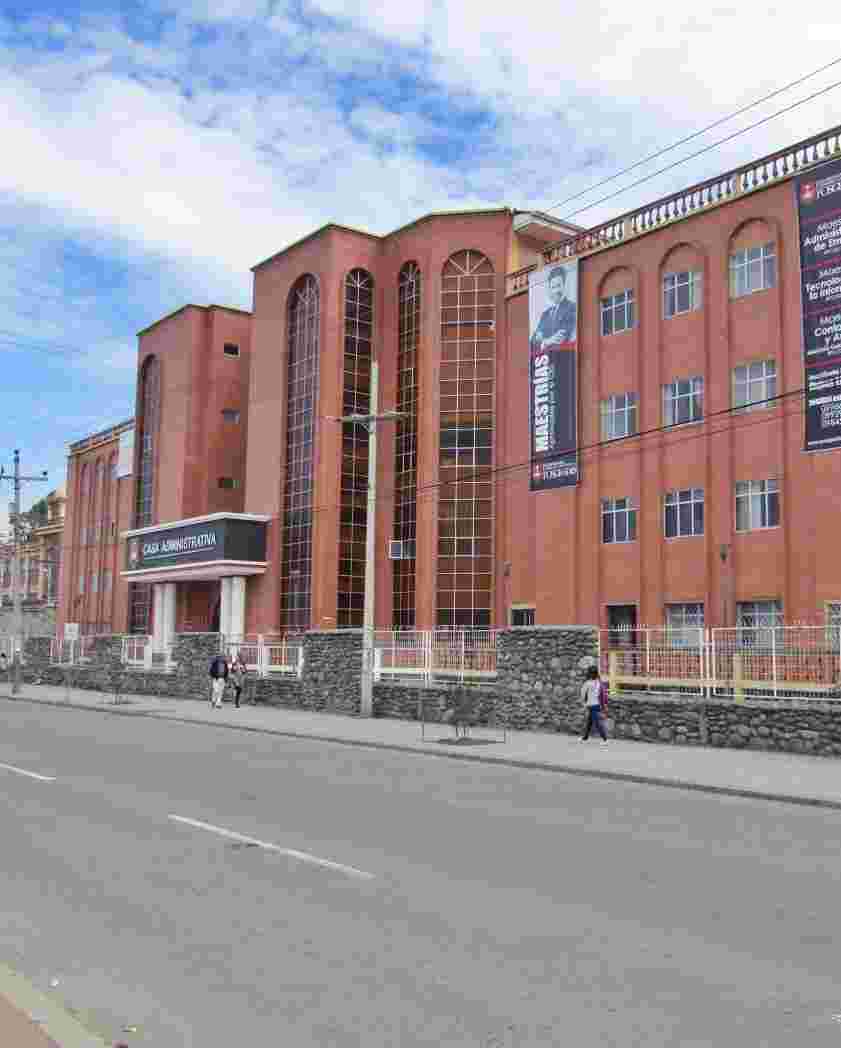Manifestaciones clínicas a causa de reacciones alérgicas por diferentes materiales de uso estomatológico
| dc.contributor.advisor | Ortega Castro, Gabriela | |
| dc.contributor.author | Barzallo Bravo, Daniela Valentina | |
| dc.contributor.cedula | 0302501465 | es_ES |
| dc.contributor.other | ., . | |
| dc.coverage | Azogues - Ecuador | es_ES |
| dc.date.accessioned | 2022-06-11T02:08:27Z | |
| dc.date.available | 2022-06-11T02:08:27Z | |
| dc.date.issued | 2021 | |
| dc.description | OBJETIVO de este trabajo fue determinar las distintas manifestaciones clínicas de reacciones alérgicas provocadas por el uso de los diferentes materiales de uso estomatológico. La MATERIALES Y MÉTODOS: la metodología aplicada fué una revisión de fuentes bibliográficas, bajo un estudio de tipo observacional, haciendo uso de distintas plataformas virtuales de rápido acceso. Los RESULTADOS obtenidos evidencian que la boca presenta alta resistencia a sufrir reacciones alérgicas debido a que contiene la saliva y ciertos componentes inmunológicos lo que facilita su rápida destrucción. Las personas con mayores afectaciones alérgicas por el uso de este tipo de materiales son las que pertenecen al género femenino con una edad adulta. Los principales alérgenos usados en la odontología son: metales (níquel, titanio, cromo, berilio, zirconio, cobalto), no metales (flúor), materiales (Biomateriales usados en prostodoncia, restauraciones de amalgama, resinas acrílicas y compuestas), además de los anestésicos locales que son medicamentos pueden generar las siguientes alergias: dermatitis oral, neumonitis, estomatitis, citotoxicidad, lesiones eritematosas y pruriginosas, entre otros. CONCLUSIONES: Se determinó que la mayor parte de materiales que son usados dentro del área odontológica presentan cierto grado de toxicidad, sin embargo como presentan una liberación lenta no producen ninguna afectación. Las principales reacciones alérgicas son: reacciones anafilácticas, reacciones citotóxicas, reacciones mediadas por complejos inmunes y las reacciones de hipersensibilidad. En muchos pacientes se determinó que la alergia más común es la estomatitis oral. | es_ES |
| dc.description.abstract | OBJECTIVE of this work was to determine the different clinical manifestations of allergic reactions caused by the use of different materials for stomatological use. The MATERIALS AND METHODS: the methodology applied was a review of bibliographic sources, under an observational study, using different virtual platforms with rapid access. The RESULTS obtained show that the mouth is highly resistant to allergic reactions due to the fact that it contains saliva and certain immunological components, which facilitates its rapid destruction. The people with the greatest allergic effects due to the use of this type of material are those who belong to the female gender with an adult age. The main allergens used in dentistry are: metals (nickel, titanium, chromium, beryllium, zirconium, cobalt), non-metals (fluoride), materials (Biomaterials used in prosthodontics, amalgam restorations, acrylic and composite resins), in addition to Local anesthetics that are medications can cause the following allergies: oral dermatitis, pneumonitis, stomatitis, cytotoxicity, erythematous and pruritic lesions, among others. CONCLUSIONS: It was determined that most of the materials that are used in the dental area have a certain degree of toxicity, however, as they have a slow release, they do not produce any affectation. The main allergic reactions are: anaphylactic reactions, cytotoxic reactions, reactions mediated by immune complexes and hypersensitivity reactions. In many patients it was determined that the most common allergy is oral stomatitis. | es_ES |
| dc.description.peer-review | . | es_ES |
| dc.description.sponsorship | . | es_ES |
| dc.description.uri | Trabajo de investigación | es_ES |
| dc.format | application/pdf | es_ES |
| dc.format.extent | ix, 49 páginas | es_ES |
| dc.identifier.citation | Barzallo Bravo, D V Manifestaciones clínicas a causa de reacciones alérgicas por diferentes materiales de uso estomatológico. Universidad Católica de Cuenca. | es_ES |
| dc.identifier.doi | . | es_ES |
| dc.identifier.journal | . | es_ES |
| dc.identifier.other | 10BT2021-TOdo-3 | |
| dc.identifier.uri | https://dspace.ucacue.edu.ec/handle/ucacue/10916 | |
| dc.language.iso | spa | es_ES |
| dc.publisher | Universidad Católica de Cuenca. | es_ES |
| dc.relation | . | es_ES |
| dc.relation.ispartofseries | .;. | |
| dc.relation.uri | . | es_ES |
| dc.rights | info:eu-repo/semantics/openAccess | es_ES |
| dc.rights.uri | http://creativecommons.org/licenses/by/4.0/deed.es | es_ES |
| dc.source | Universidad Católica de Cuenca | es_ES |
| dc.source | Repositorio Institucional - UCACUE | es_ES |
| dc.subject | hipersensibilidad | es_ES |
| dc.subject | reacciones adversas | es_ES |
| dc.subject | materiales odontoestomatológicos | es_ES |
| dc.subject | manifestaciones clínicas | es_ES |
| dc.subject | odontología | es_ES |
| dc.subject.ocde | hypersensltivity, dentistry | es_ES |
| dc.subject.ocde | adverse reactions | es_ES |
| dc.subject.ocde | odonto-stomatologic materials | es_ES |
| dc.subject.ocde | clinical manifestations | es_ES |
| dc.subject.ocde | odontology | es_ES |
| dc.title | Manifestaciones clínicas a causa de reacciones alérgicas por diferentes materiales de uso estomatológico | es_ES |
| dc.title.alternative | . | es_ES |
| dc.type | info:eu-repo/semantics/bachelorThesis | es_ES |
| thesis.degree.discipline | Salud y Bienestar | es_ES |
| thesis.degree.grantor | UCACUE-Campus Universitario Azogues. Odontología | es_ES |
| thesis.degree.level | Título Profesional | es_ES |
| thesis.degree.name | Pregrado | es_ES |
| thesis.degree.program | Presencial | es_ES |
Archivos
Bloque original
1 - 1 de 1
Cargando...
- Nombre:
- DANIELA BARZALLO BRAVO.pdf
- Tamaño:
- 3.94 MB
- Formato:
- Adobe Portable Document Format
- Descripción:
- Consultar en Biblioteca Mons. Froilán Pozo Quevedo-Campus Universitario Azogues
Bloque de licencias
1 - 1 de 1
Cargando...
- Nombre:
- license.txt
- Tamaño:
- 1.71 KB
- Formato:
- Item-specific license agreed upon to submission
- Descripción:




